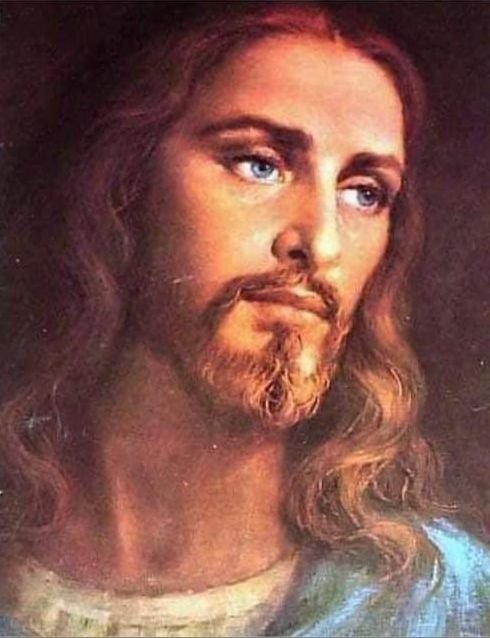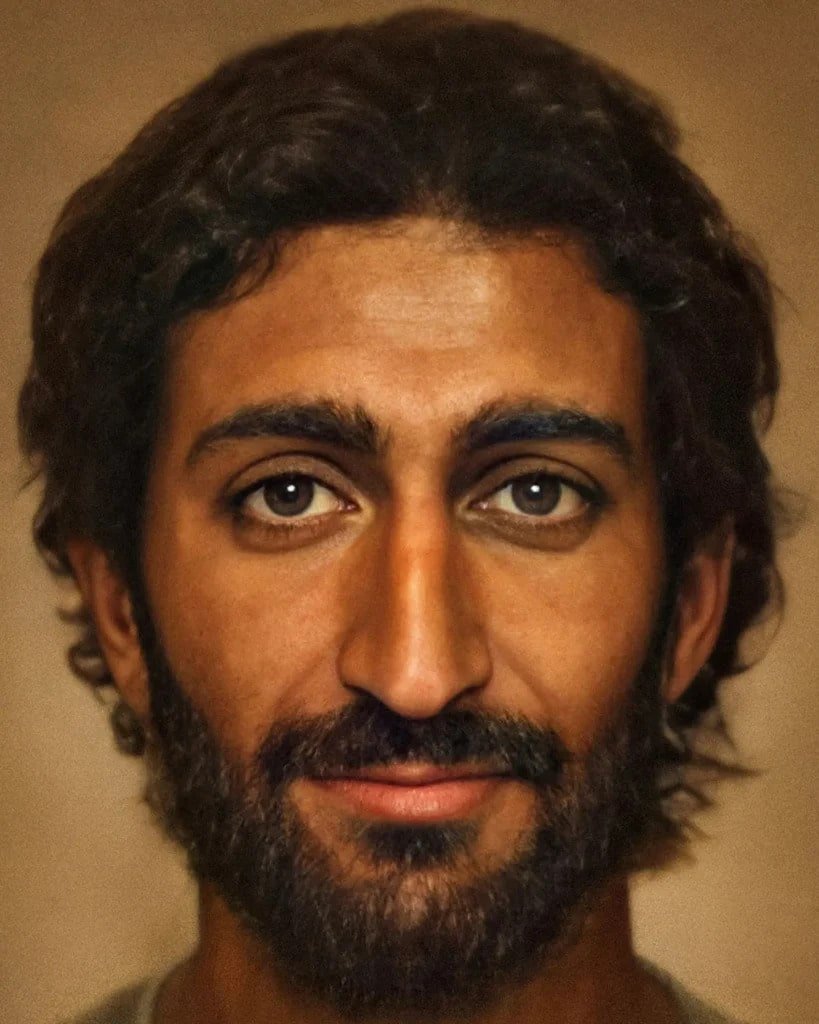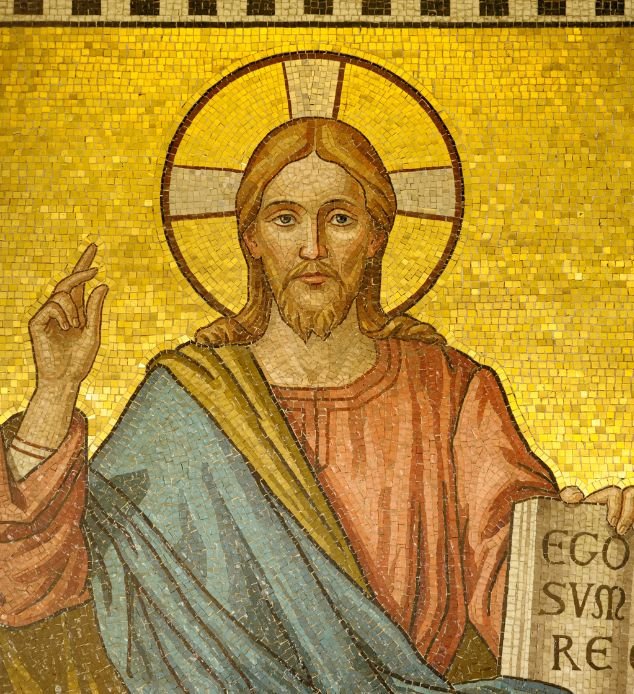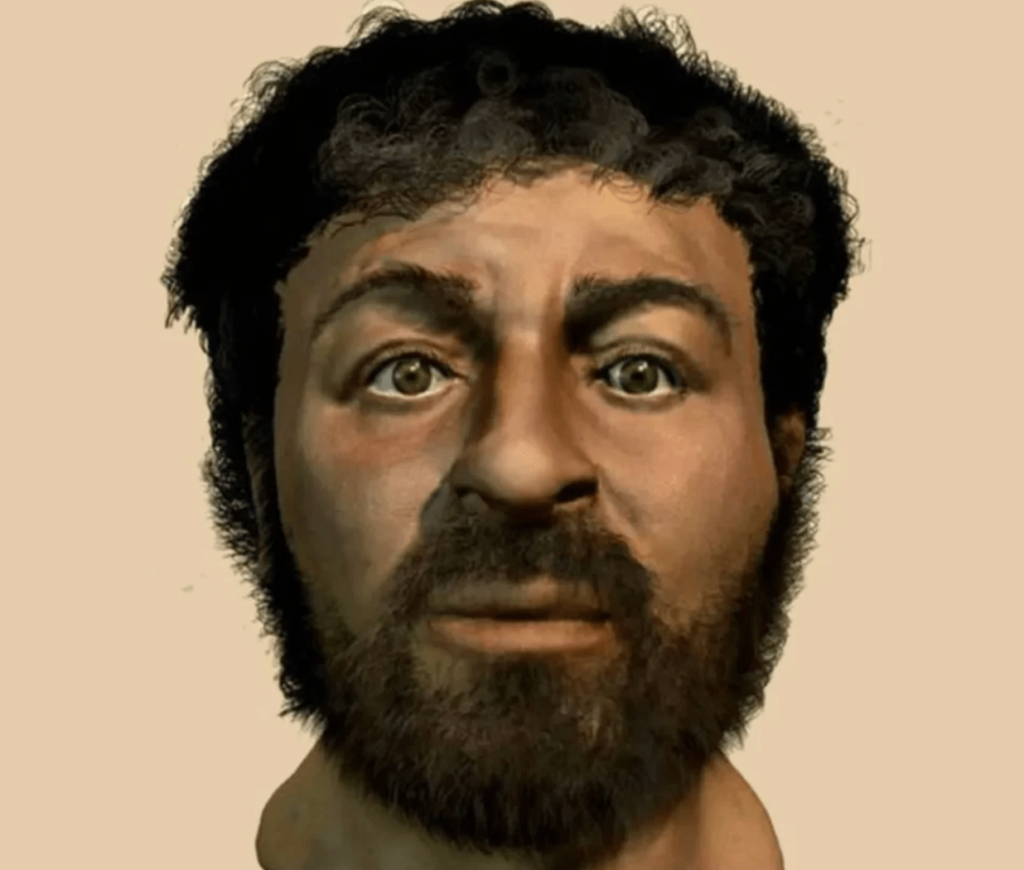
The Catholic Church’s depiction of Jesus Christ has long been that of a white, European-looking man with stunning blue eyes. However, scholars believe that the genuine face of Jesus differs significantly from these imaginative imaginings of Renaissance painters.
They believe that the Son of God resembled a typical male from the ancient borders of Palestine: shorter in stature, muscular in build, and adorned with curly black hair.
Bas Uterwijk, a Dutch photographer and digital artist, embarked on a new journey in search of an answer to the age-old question of Jesus’ appearance.

Armed with cutting-edge technology, Bas set out to create an image of Jesus that corresponded as closely as possible to the historical backdrop of his birthplace. Using Artbreeder’s powerful machine-learning techniques, he aimed to recreate the Messiah’s likeness.
Not surprisingly, the image that emerged from Bas’ efforts contradicts our common perceptions of Jesus’ appearance.
Bas explains, “The AI software harnesses the power of a neural network trained on many photographic portraits and painted renditions of human faces.”
This innovative application allows users to combine numerous facial references, creating a synthesized image that incorporates the user’s aesthetic preferences. Bas used this skill to bring both real and fictional personalities to life.
“I aimed to refine the ethnicity, creating a Middle-Eastern visage that resonates with authenticity. I drew upon a wealth of artistic portrayals of Jesus of Nazareth rooted in Byzantine and Renaissance traditions, including Leonardo da Vinci’s ‘Salvator Mundi’ and the enigmatic Turin Shroud,” Bas adds.
While Bas was pleased with the outcome as a reflection of collective cultural depictions, he sought greater historical accuracy.


“I meticulously adjusted the hair and beard lengths and styles to reflect the norms of that era and region,” he says. “I incorporated elements from Fayum mummy portraits, minimizing Renaissance aesthetics.”
Bas’ efforts have resulted in something more akin to an artistic impression of what Jesus might have looked like, rather than a highly scientific endeavor.
Born into a Jewish family in Bethlehem in 4 BC, Jesus grew up there before settling in Nazareth, a town in Israel. This story, of course, originates from the Bible.
According to Joan Taylor, author of “What Did Jesus Look Like,” historical records show that the people of Judea and Egypt typically had olive-toned complexions, ebony-black hair, and brown eyes.
Everyone has a preconceived image of Jesus’ appearance. Images of Jesus pervade all cultures, resulting in universal recognition. This phenomenon has led to almost automatic identification, often eliminating the need for deeper inquiry.
“However, the iconic features we associate with Jesus – flowing hair, robes, and beards – date back to the 4th or 5th centuries,” Taylor says. In reality, Jesus’ looks differed significantly from these depictions.
“He wasn’t fair-skinned, and Europe wasn’t his home. He was a product of his time, deeply rooted in his geographical and historical surroundings.”
Joan Taylor adds, “His complexion would have been darker, complemented by short, raven-black hair – indeed, long hair was uncommon during the first century.”

His face would have been adorned with a beard, and his feet would have been shod with sandals. Taylor, an expert on the origins of Christianity, emphasizes that Jesus led an itinerant life with no permanent residence. He relied on others’ kindness and shared in the hardships of the less fortunate.
Historical records, such as those of the 2nd Century scholar Celsus, support this depiction of Jesus as a humble figure – scruffy, like a wandering itinerant with an unkempt appearance, similar to a beggar.
As Jesus once said, “Foxes have dens, birds have nests, but the Son of Man has no place to lay his head.” This epitomizes the best explanation of Jesus’ existence.
Interestingly, Jesus’ reach extended beyond his immediate surroundings, touching Europeans and Africans. Richard Neave, a forensic facial reconstruction specialist, was tasked with imagining the likeness of a Judean man from the first century, similar to Jesus.
Neave’s meticulous reconstruction depicts a stocky man with dusky skin, short hair, and an olive complexion.
As this project provides new perspectives on the multiple facets of Jesus’ appearance, we encourage you to SHARE this post with your friends and family, sparking meaningful discussions about the historical details of this iconic figure.




